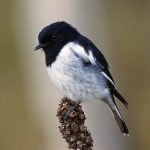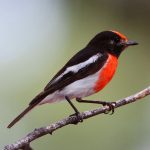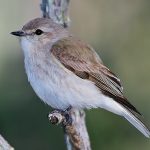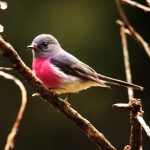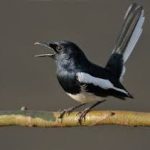Scarlet robin
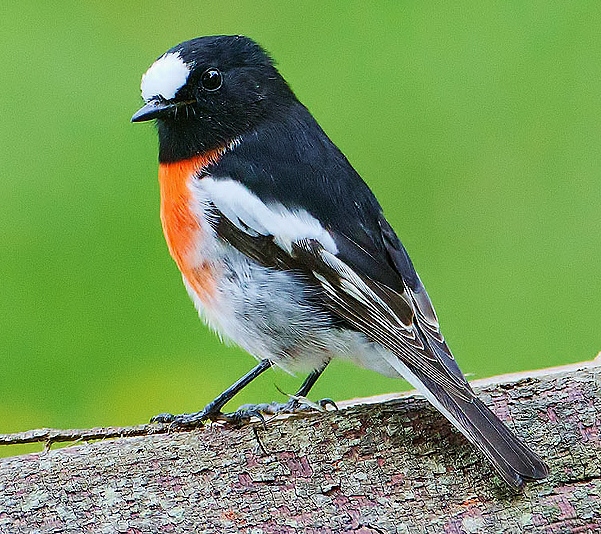
 |
| Photo by Kevin Agar (Flickr) |
Common name:
scarlet robin (en); rouxinol-escarlate (pt); miro écarlate (fr); petroica escarlata (es); Australienscharlachschnäpper (de)
Taxonomy:
Order Passeriformes
Family Petroicidae
Range:
This species is found in south-eastern and south-western Australia, in Tasmania and Norfolk island, and in Fiji, Samoa, Solomon islands, Vanuatu and the Bougainville islands of Papua-New Guinea.
Size:
These birds are 12-13,5 cm long and weigh 12-14 g.
Habitat:
The scarlet robin is mostly found in dry forests and savannas, namely Eucalyptus stands, but also in moist tropical forests, rural areas, plantations and within urban areas.
Diet:
They mainly feed on insects and other arthropods, namely Coleoptera, Collembola, Diptera, Hemiptera, Lepidoptera, Orthoptera, Pseudoscorpionida and Araneae.
Breeding:
Scarlet robins breed in August-March. The female builds the nest alone, a neat cup made of spider webs, fine bark, moss and grass, lined with fine bark, fur, feathers and hairs. It is placed in a tree or sometimes in a scrub, 2-14 m above the ground. The female lays 1-4 pale blue, green or grey eggs with olive-brown splotches, which are incubated for 15-18 days. The chicks fledge 15-17 days after hatching.
Conservation:
IUCN status – LC (Least Concern)
This species has a large breeding range and is reported to be locally fairly common. The population is estimated to be in decline following a possible range contraction owing to habitat loss, as well as predation pressure from introduced species such as cats and black rats Rattus rattus.
